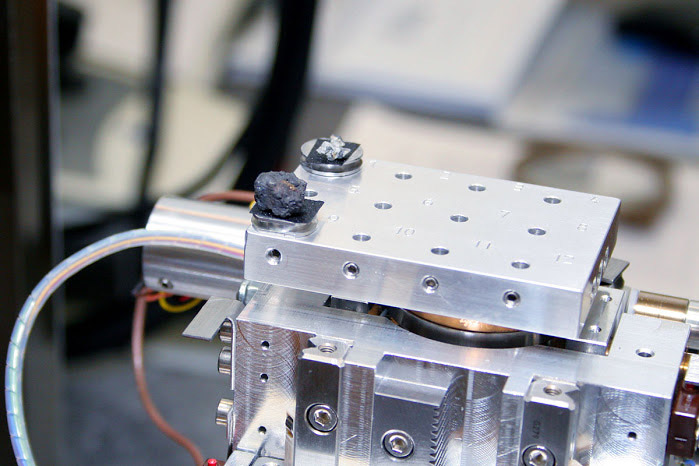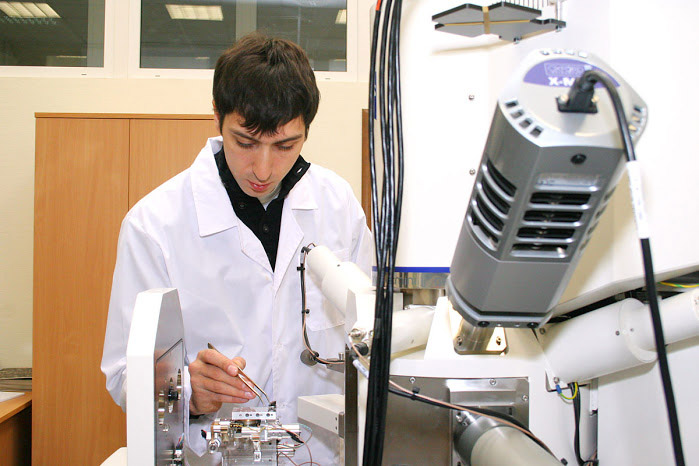Meteorites from Russian Fireball Possibly Found

A group of Russian scientists has reported finding small meteorites from the fireball that exploded over the Chelyabinsk region in a blinding light, sending a shockwave that caused millions of dollars in damage in the city.
NASA has estimated that the Russian meteor was 55 feet (17 meters) in diameter and weighed about 10,000 tons when it entered Earth’s atmosphere on Friday (Feb. 15). The meteor was travelling 40,000 mph (64,373 km/h) when it exploded in a flash brighter than the sun.
While most of the meteor likely vaporized in the atmosphere, the rock was big enough that plenty of pieces likely fell to Earth, experts have said.
Now, scientists with the Urals Federal University announced that they had found "53 small, stony, black objects" around a lake near Chelyabinsk, Reuters reported. The lake, Lake Chebarkul, is the same one where a 20-foot-wide hole in the thick ice cover was thought to have been caused by a chunk of the meteor. [Meteor Streaks Over Russia, Explodes (Photos)]
Divers have been exploring the frigid waters, but have found no signs of meteorite fragments. Russian officials have said they think the hole was caused by something else and have shifted their focus to cleaning up from the shockwave damage, AFP has reported.
The meteor was unrelated to an asteroid, 2012 DA14, that made an extremely close flyby of Earth on Friday, passing within 17,200 miles (27,000 kilometers), but never posing a threat to the planet.

Ural university scientists said that they had confirmed that the fragments they found were in fact meteorites (the term once a meteor has landed on the Earth’s surface). Tests they performed showed that they were chondrite, or stony, meteorites, the most common type of meteorite in the solar system, Reuters quoted one of the scientists as saying.
Get the Space.com Newsletter
Breaking space news, the latest updates on rocket launches, skywatching events and more!
The meteorite fragments were a mere 0.2 to 0.4 inches (0.5 to 1 centimeters) across, Reuters reported.
Scientists aren't the only ones looking for meteorites from the Russian fireball. Collectors are also rushing to the region in hopes of finding chunks of the space rock.
"This is the biggest event in our lifetime," rock dealer Michael Farmer of Tucson, Ariz., told OurAmazingPlanet, a sister site to SPACE.com, on Friday. "It's very exciting scientifically and for collecting, and luckily, it looks like there will be plenty of it."
Farmer said he's planning to leave for Russia as soon as possible. "I wouldn't miss this for the world," he said.
Purported pieces of the meteorite began appearing on eBay hours after the meteor blast, though experts said those were likely fakes. Just how much any actual chunks of the meteorite will fetch will depend on how rare the pieces are and the type and origin of the meteorite, Farmer said.
Editor's note: If you snapped a photo of the meteor explosion over Russia that you'd like to share for our image gallery, send photos, comments and your name and location to managing editor Tariq Malik at spacephotos@space.com.
Reach Andrea Thompson at athompson@techmedianetwork.com and follow her on Twitter@AndreaTOAP and on Pinterest.You can follow SPACE.com on Twitter @Spacedotcomand on Facebook & Google+.
Join our Space Forums to keep talking space on the latest missions, night sky and more! And if you have a news tip, correction or comment, let us know at: community@space.com.

Andrea Thompson is an associate editor at Scientific American, where she covers sustainability, energy and the environment. Prior to that, she was a senior writer covering climate science at Climate Central and a reporter and editor at Live Science, where she primarily covered Earth science and the environment. She holds a graduate degree in science health and environmental reporting from New York University, as well as a bachelor of science and and masters of science in atmospheric chemistry from the Georgia Institute of Technology.









